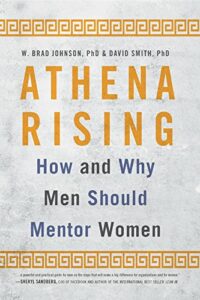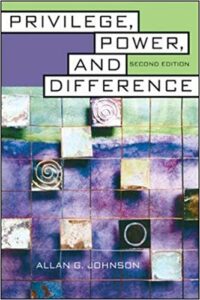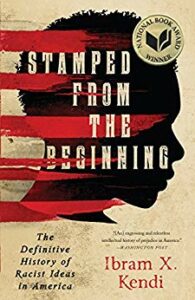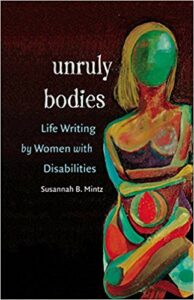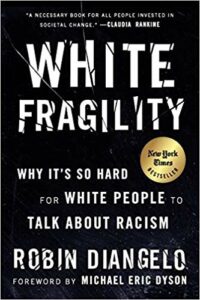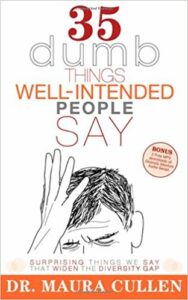This year we’re focusing not on New Year’s resolutions, but some goals and themes for 2019. One of those goals is to catch up on our reading. If you are a subscriber to our DEI newsletter, you’re probably aware that there is no dearth of news and articles coming out daily that relate to diversity, equity, and inclusion (‘DEI’) in the workplace. In addition to current affairs and newly released research, we also have a fairly hefty, ever-expanding list of books pertaining to DEI. By no means is this a complete or exhaustive list, but we’ve pulled together a roundup of some of our favorite books that we refer to, love, or aspire to finish reading, that live in our physical and digital bookshelves. Next step- – who wants to join our book club?
Athena Rising: How and Why Men Should Mentor Women | W. Brad Johnson and David Smith
Authors Brad Johnson and David Smith, both professors at the U.S. Naval Academy, hit a home run with this no-nonsense, timely guide that will benefit any man who wants to more effectively mentor or manage women in the workforce. This book examines the importance of mentorship and how gender dynamics play into these relationships. We are fans of Johnson and Smith and the great work that they are both doing! Follow David Smith on Twitter for additional insights.
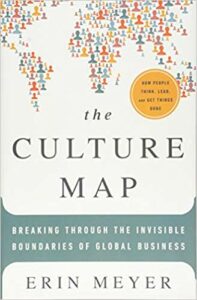 The Culture Map | Erin Meyer
The Culture Map | Erin Meyer
An international business expert helps you understand and navigate cultural differences in this insightful and practical guide, perfect for both your work and personal life. Meyer, a professor at INSEAD, guides readers through navigating cultural differences in the workplace. Her work focuses on how we can navigate the complexities of cultural differences in today’s global workplace. We find this to be an invaluable resource for anyone working in a global organization.
El Deafo | Cece Bell
In this funny, poignant graphic novel memoir, author/illustrator Cece Bell chronicles her hearing loss at a young age and her subsequent experiences with the Phonic Ear, a very powerful—and very awkward—hearing aid. Felicia highly recommends this graphic novel. It touches on the author’s experience of what it was like to become deaf, and how she turned her hearing aid into a superpower. It is beautifully written and drawn, and is great for kids and adults alike! If you’ve been wondering how to talk about differences and disability to your children, this is the book for you.
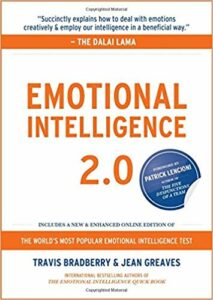 Emotional Intelligence 2.0 | Travis Bradberry and Jean Greaves
Emotional Intelligence 2.0 | Travis Bradberry and Jean Greaves
Emotional Intelligence 2.0 delivers a step-by-step program for increasing your EQ via four, core EQ skills that enable you to achieve your fullest potential. This guide instructs you how to increase your own emotional intelligence and further develop this important skill set. It’s a short but insightful read.
Just Mercy | Bryan Stevenson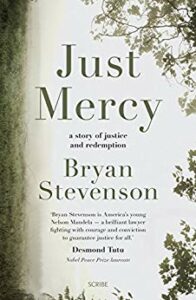
Just Mercy is at once an unforgettable account of an idealistic, gifted lawyer’s coming of age, a moving portrait of the lives of those he has defended, and an inspiring argument for compassion in the pursuit of justice. Stevenson’s powerful book details his experience founding the Equal Justice Initiative. He takes a nuanced and insightful look at our criminal justice system. This is a powerful, moving and important read, a must-have for your bookshelf.
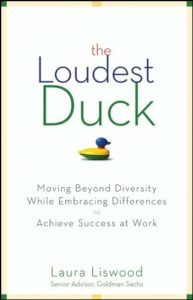 The Loudest Duck: Moving Beyond Diversity while Embracing Differences to Achieve Success at Work | Laura A. Liswood
The Loudest Duck: Moving Beyond Diversity while Embracing Differences to Achieve Success at Work | Laura A. Liswood
Diversity in the workplace is a wonderful thing—but it also challenges many of today’s business leaders. For managers and team-members alike, it can be difficult to navigate in a truly diverse workplace made up of people of different cultures, races, creeds, body types, hobbies, genders, religions, styles, and sexual orientations. But understanding our cultural and social differences is a major key to a high-performing, merit-based work environment. This short and sweet business fable explores workplace diversity and how to think about appreciating our differences.
Privilege, Power, and Difference | Allan G. Johnson
Written in an accessible, conversational style, Johnson links theory with engaging examples in ways that enable readers to see the underlying nature and consequences of privilege and their connection to it. This book helps readers examine systems of privilege and difference in our society. We’re referring back to this one as we prep for our panel on power and privilege in the workplace at SXSW in Austin this March.
Readings for Diversity and Social Justice | Maurianne Adams (Editor)
With full sections dedicated to racism, religious oppression, classism, ableism, youth and elder oppression, as well as an integrative section dedicated to sexism, heterosexism, and transgender oppression, this bestselling text goes far beyond the range of traditional readers. A definitive anthology of oppression. This book is a hefty resource (pro tip– get the Kindle version if you travel often, or be prepared to bulk up those arm muscles!) that we refer to frequently. This is more of an academic read, but should be a staple in any practitioner’s library.
Stamped from the Beginning: The Definitive History of Racist Ideas in America | Ibram X. Kendi
In this deeply researched and fast-moving narrative, Kendi chronicles the entire story of anti-black racist ideas and their staggering power over the course of American history. Kendi’s book takes a deep dive into our past and examines the history of racism in American society. This National Book Award winner is a dense and detailed read and is a mainstay on Felicia’s bedside table.
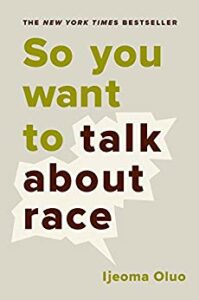 So You Want to Talk About Race | Ijeoma Oluo
So You Want to Talk About Race | Ijeoma Oluo
In So You Want to Talk About Race, Editor at Large of The Establishment Ijeoma Oluo offers a contemporary, accessible take on the racial landscape in America, addressing head-on such issues as privilege, police brutality, intersectionality, micro-aggressions, the Black Lives Matter movement, and the “N” word. We are huge fans of The Establishment and of Oluo’s work in general. She examines today’s world through a racial lens, examining a variety of issues such as police brutality and intersectionality.
Unruly Bodies: Life Writing by Women with Disabilities | Susannah B. Mintz
The first critical study of personal narrative by women with disabilities, Unruly Bodies examines how contemporary writers use life writing to challenge cultural stereotypes about disability, gender, embodiment, and identity. Disability is oftentimes ignored or overlooked, even when having conversations around diversity, equity and inclusion. Mintz’s study brings this highly relevant topic to the forefront.
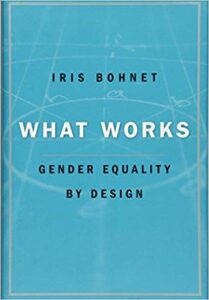 What Works: Gender Equality by Design | Iris Bohnet
What Works: Gender Equality by Design | Iris Bohnet
What Works is built on new insights into the human mind. It draws on data collected by companies, universities, and governments in Australia, India, Norway, the United Kingdom, the United States, Zambia, and other countries, often in randomized controlled trials. It points out dozens of evidence-based interventions that could be adopted right now and demonstrates how research is addressing gender bias, improving lives and performance. An instant classic. Bohnet offers research-grounded solutions to tackling gender bias in organizations. If you are in the Boston area, keep an eye out– Bohnet frequently speaks at various Harvard events.
White Fragility: Why It’s So Hard for White People to Talk About Racism | Robin DiAngelo
The New York Times best-selling book exploring the counterproductive reactions white people have when their assumptions about race are challenged, and how these reactions maintain racial inequality. This book may be especially approachable for those readers who have never had to step outside their privilege to consider some of the topics DiAngelo raises around examining whiteness.
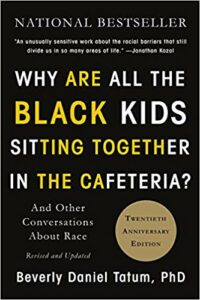 “Why Are All The Black Kids Sitting Together in the Cafeteria?”: A Psychologist Explains the Development of Racial Identity | Beverley Daniel Tatum
“Why Are All The Black Kids Sitting Together in the Cafeteria?”: A Psychologist Explains the Development of Racial Identity | Beverley Daniel Tatum
Walk into any racially mixed high school and you will see Black, White, and Latino youth clustered in their own groups. Is this self-segregation a problem to address or a coping strategy? Beverly Daniel Tatum, a renowned authority on the psychology of racism, argues that straight talk about our racial identities is essential if we are serious about enabling communication across racial and ethnic divides. This classic landmark book on the psychology of racism is newly updated and revised. First published in 1997, it is still an essential and relevant read today; we regularly refer to stories from this book.
35 Dumb Things Well-Intended People Say: Surprising Things We Say That Widen the Diversity Gap | Maura Cullen
If you’ve ever wanted to be more effective in your communication with others, or have been afraid of saying the wrong thing, then this concise guide is essential to becoming more inclusive and diversity-smart. This is a short read, but contains great nuggets. Cullen breaks down statements such as ‘I don’t see color, I’m colorblind’, explains why they are problematic, and offers suggestions on how to respond.
We hope you find this list of books to be a useful list of resources that helps you further your education– whether you are a practitioner, someone who is tasked with furthering DEI efforts at your company, or you’re just interested in learning more! If we’ve missed anything, don’t hesitate to tweet at us or drop us an email!
Please note that all links go to Amazon.com and are affiliate links, which means, if you go to Amazon from one of these links and buy it, we get a few sheckles. This in no way influenced our selection of books!

